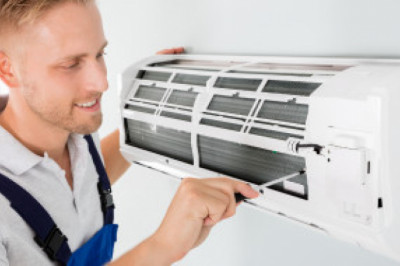views

Selection of Current transformer for
accurate measurement and reliable protectionschemeSelection of Current transformer
In Power system itis necessary to measure current but it is not feasible to measure currentdirectly with measuring devise as higher current can damage the measuringdevise or relay. So Current transformer is required that reduce current inmeasuring circuit (secondary) proportional to flowing current. Currenttransformer isused for metering and protection purpose.
Selection of CTsIn industrial Applications should be done properly for accurate measurement andreliable protection scheme so selection of CT plays significant role formetering and designing protection system. Various factors need to considerwhile selecting current transformer.
CT ratiois defined as ratio of primary and secondary current of CT. In orderto defineprimary current of CT, consider subsequent rating of current to bemeasured or it should be selected from rating of circuit breaker. For example,if current to be measured is 340 A then Primary current rating of CT shall be400 A. For secondary current, there are two standard values, 1 A and 5 A whichare decided by distance between CT and measuring instrument/relay. 5A currentto be considered if distance between CT and measuring instrument/relay is less.Generally we consider 5A secondary current when CT and measuringinstrument/relay are in same switchboard. 1A current shall be considered ifdistance between CT and measuring instrument/relay is more. Power loss shall behigh in case of long distance. For Instance, If CT to be installed formeasuring 340A and meter is within same switchboard then CT ratio shall bestated as 400/5A.
Burden is termed as load on secondary circuit of current transformer so itis measured in VA. It can be expressed as a product ofsecondary current and totalimpedance of secondary circuit. Total impedance is sum of CT secondary windingimpedance, impedance of connecting wire and impedance of measuringinstrument/relay. If secondary current is 5 A than burden will 25 times higher thanburden of 1 A CT, So it is advisable toselect 1 A secondary current if distance between Ct and Instrument is more. Valueof burden should be selected as close as possible to total impedance but higherthan calculated total impedance otherwise it affects accuracy of measurement.Standard rated burden are 2.5 VA, 5 VA, 7.5 VA, 10 VA, 15 VA and 20 VA for Lowvoltage CT.
Accuracyclass states the precision level of measurement.Standard value of accuracy class is 0.1, 0.2, 0.5, 1, 1.5, PS, 5P and 10P.
0.1 accuracy class means 0.1% erroris acceptable in measurement. For metering purpose class 0.1 to 1.5 CT isconsidered to achieve higher accuracy at rated current.
5P and 10P class areconsidered for protection purpose only where P stands for protection purposeand PS class is special class used for differential and REF protection whichrequired higher accuracy.
Instrument safetyfactor (ISF)of current transformer is ratio oflimit primary current to rated primary current. If current increases more thanlimit primary current then core of CT shall be saturate and protect meteringequipment in overcurrent condition. For example if core of CT with 800/5A ratiogets saturated at 4000A then its ISF is 5. ISF is defined only for measuring CTas protection class CTs are intended to flow fault current throughmeasuring/Protecting devices.
Accuracyclass factor isratio of nominal overcurrent to bemeasured to primary rated current. This factor is defined only for protectionCT. The function of protection CT is to measure current in fault condition soits core should not get saturated in fault condition. ACF is placed after accuracy class designationin percentage. To illustrate, 5P10 class means that 10 times over current thanprimary rated current causes not more than 5% error in measurement of primarycurrent.
CTs are alsoclassified in terms of construction; wound type and window type CT. It ispreferable to use wound type CT in case of low primary current and window typeCT are selected if primary current is high. In window type CT, primaryconductor is cable or busbar passing through CT and it is not advisable to usefor measuring low current as its accuracy reduce. Finally CT shall be selecteddepending upon size of cable or busbar. In high voltage application, CT withmultiple secondary winding can be used means separate winding for metering andprotection in single CT.
In VMS, Processfor Selection of CTs is being done considering all aspects and we providetechnical specification of CT as per IS-2705 and IEC-61869. We considerprotection CT in HT panel and incomers of Main LT panel and metering CT in allfeeders of Main LT panel, incomer of other panel and feeder for machines as perproject requirement.
Call project management services in Indiaat +91 – 79 – 40236 236, Email at contact@vmsconsultants.com
Website - https://www.vmsconsultants.com/
Free Consultation - https://www.vmsconsultants.com/free-consultation/
Inquire us online - https://www.vmsconsultants.com/contact-us/












